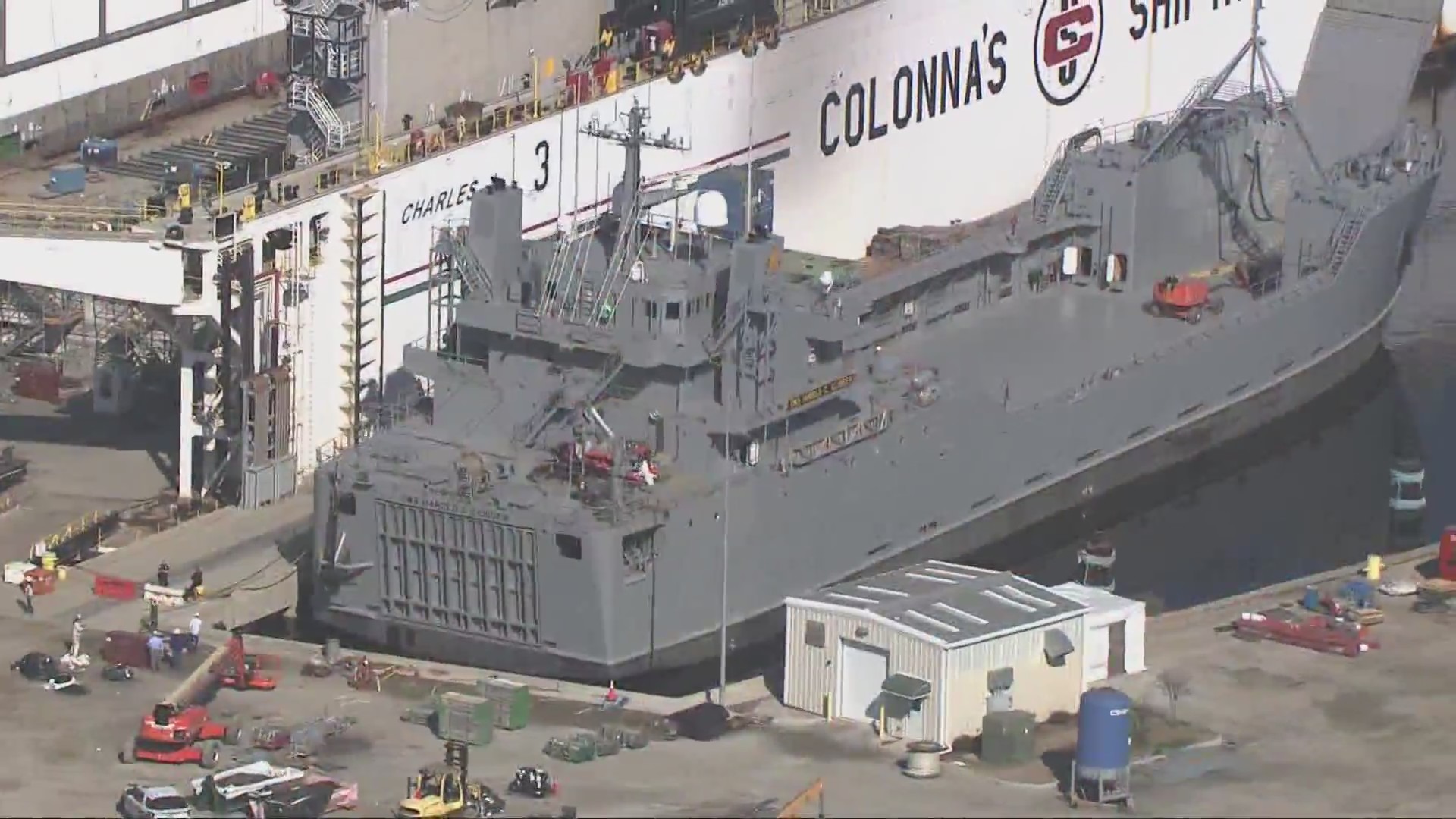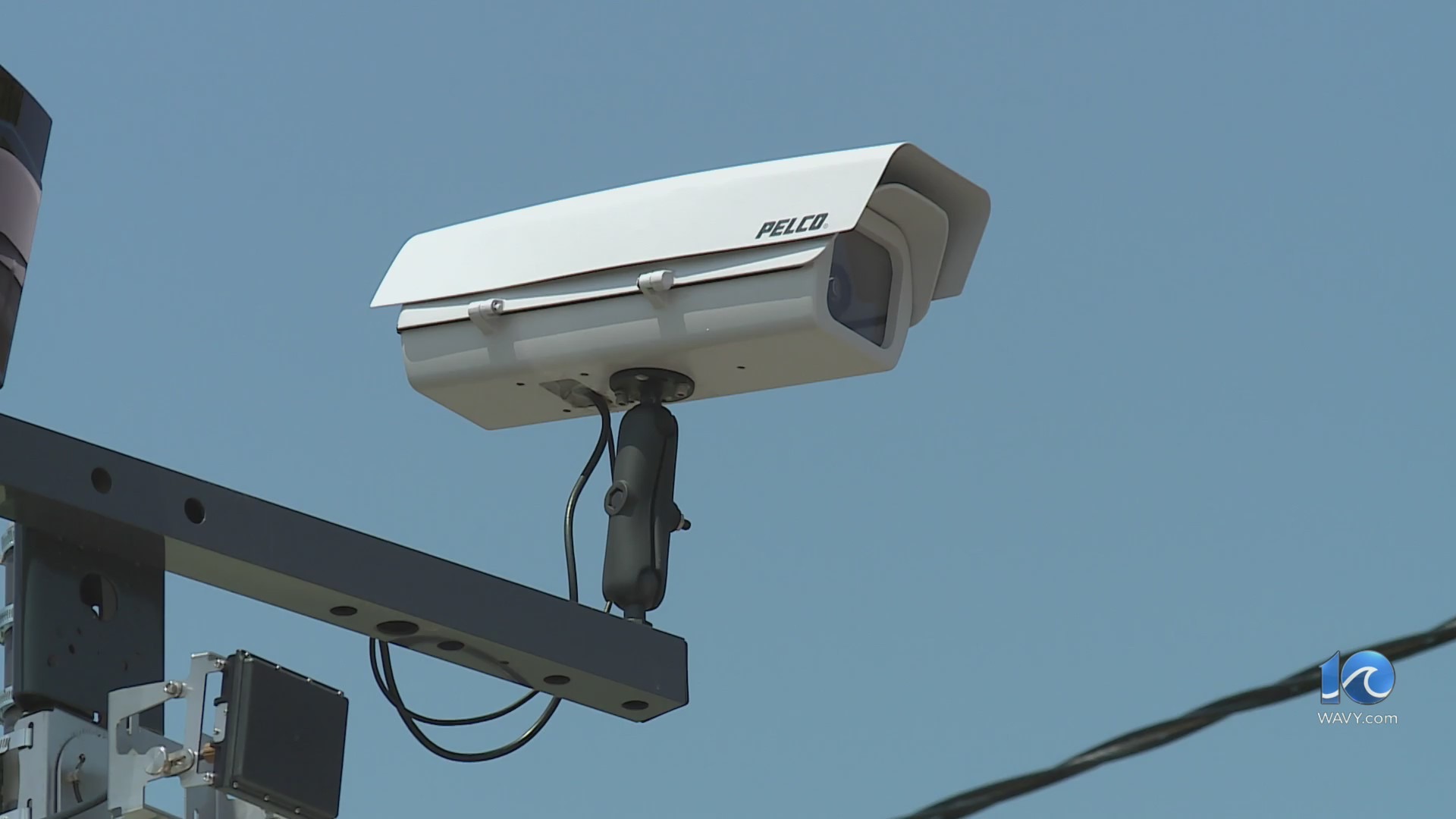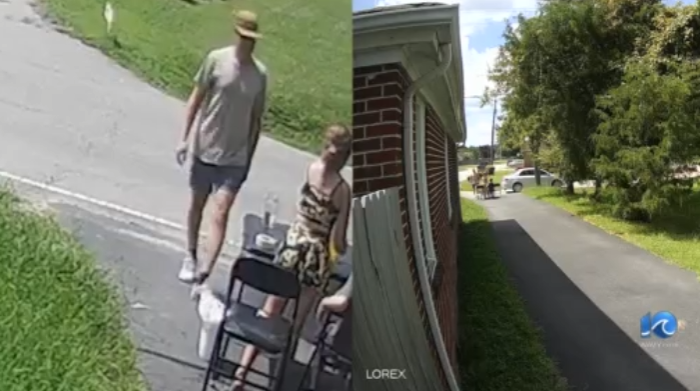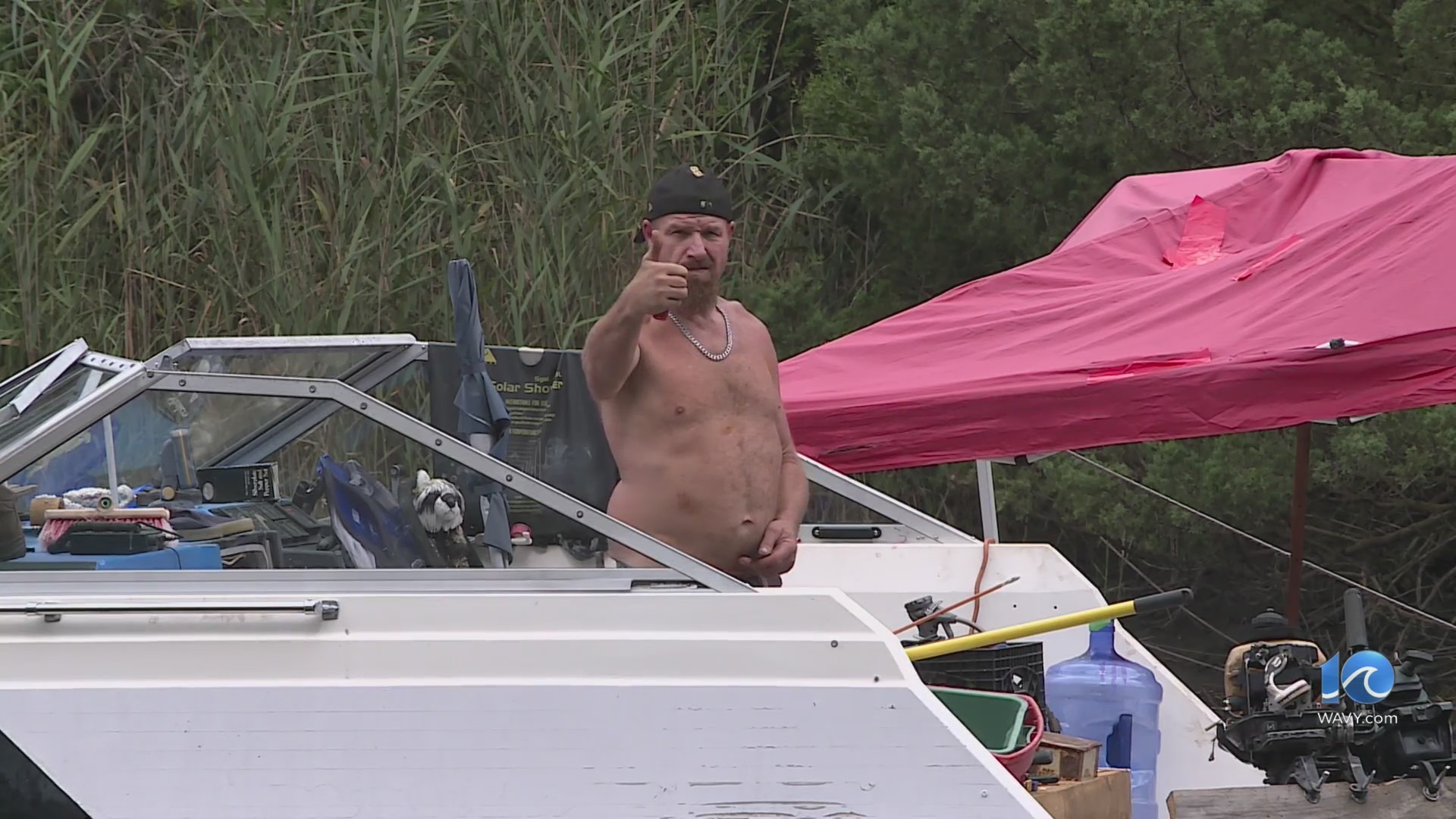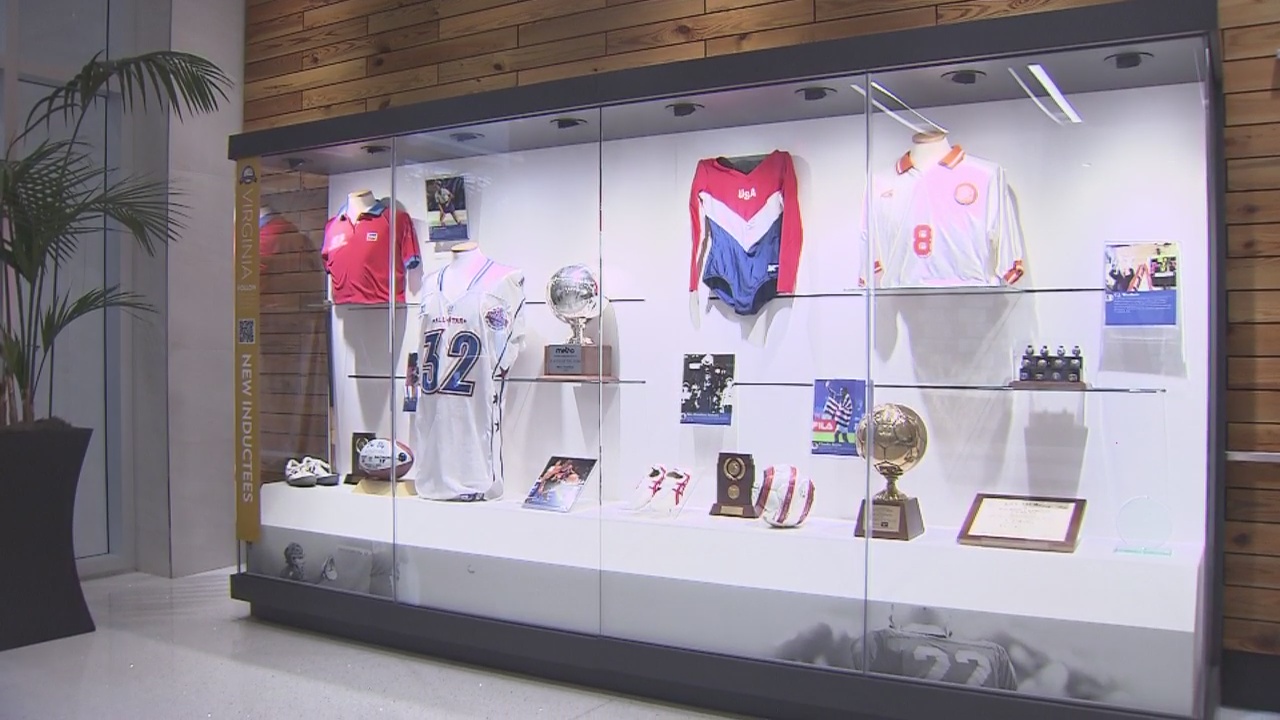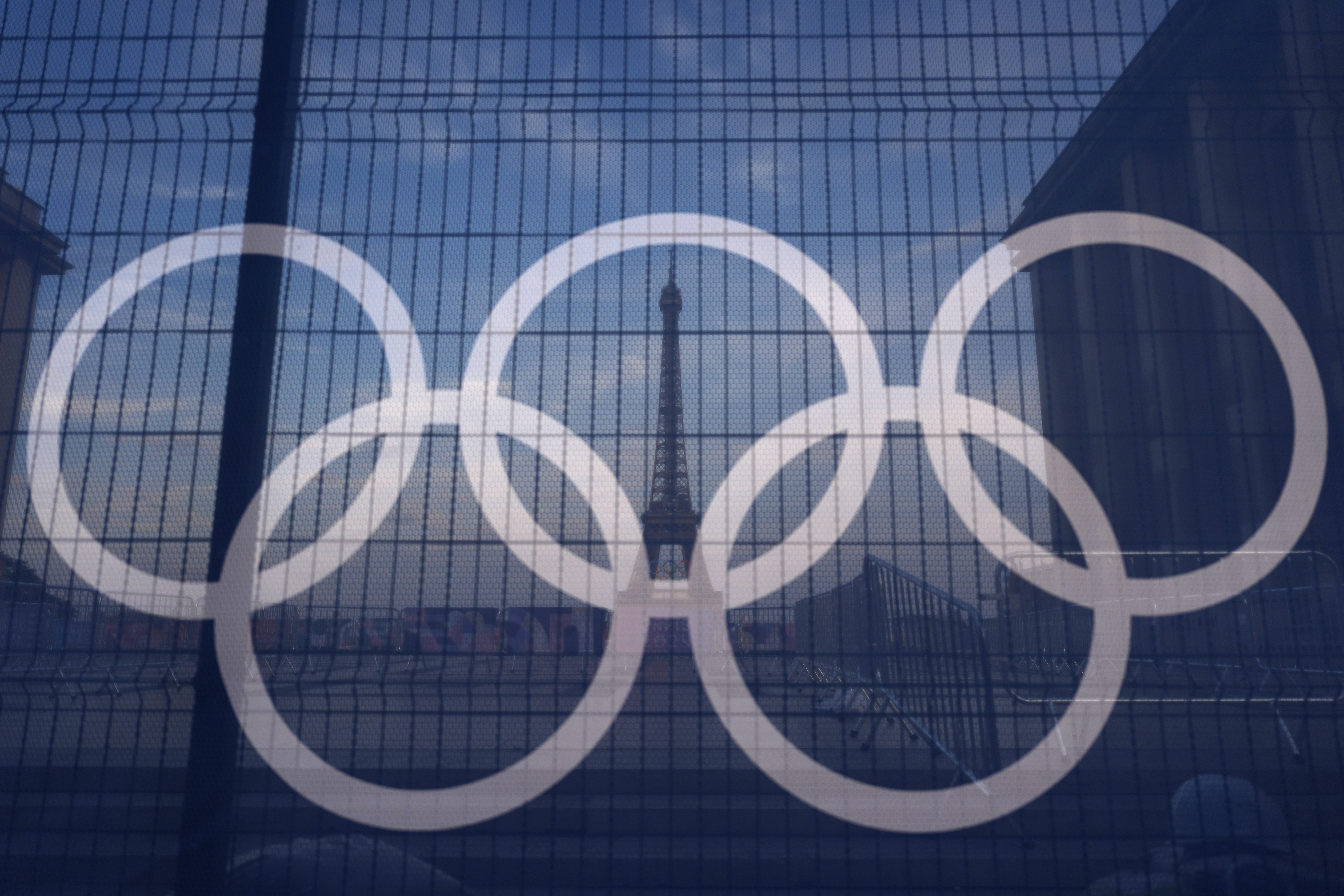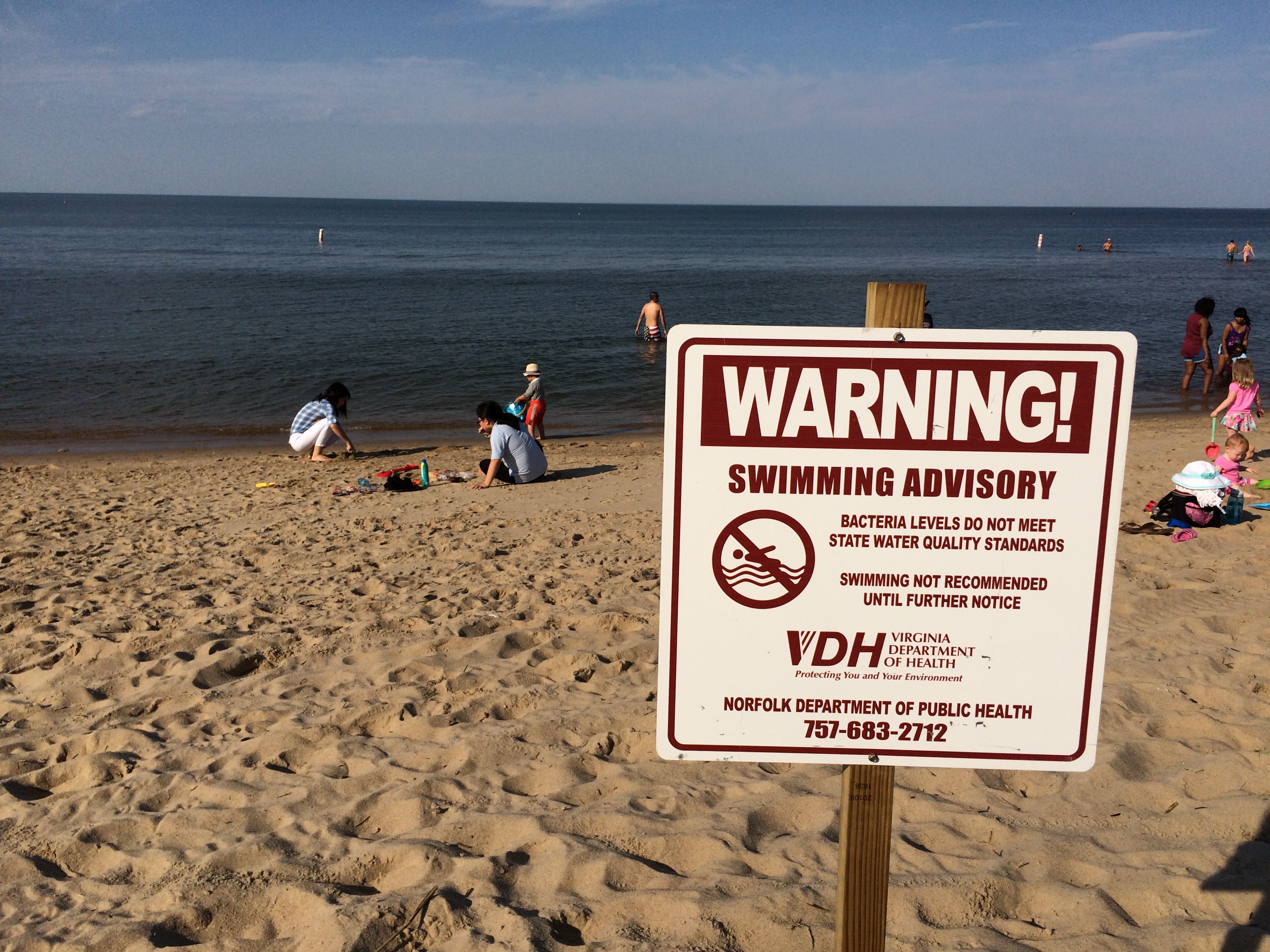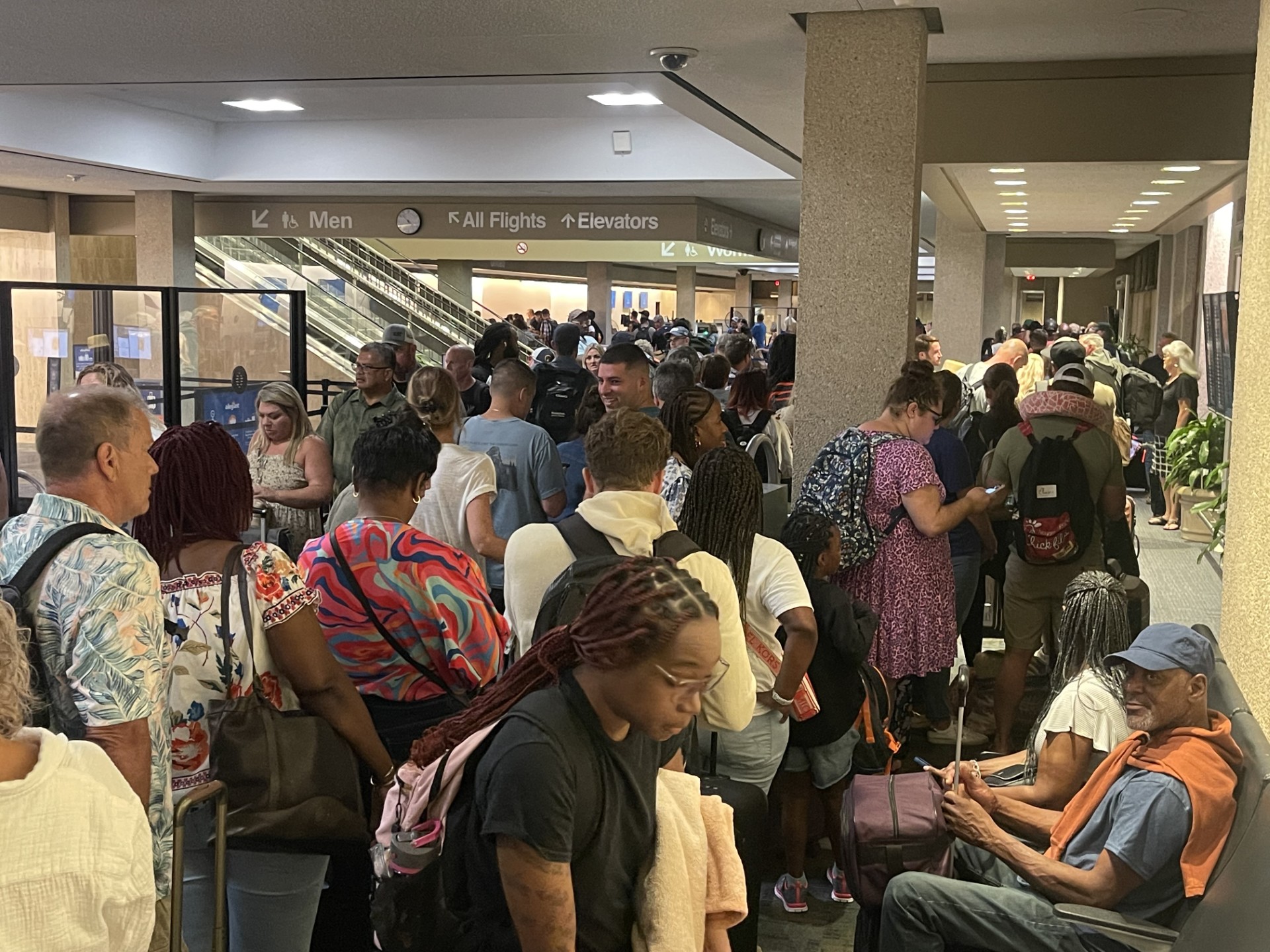CHICAGO (WGN) — Eighty years after he left Chicago’s South Side to fight in World War II, Ed McGuire finally made it home.
The journey stretched across three continents, eight decades, and a lifetime of questions for his relatives.
A HERO’S WELCOME, A SOLIDER’S SENDOFF
On Saturday, October 28, those distant relatives — joined by hundreds who lined the streets — gave McGuire a hero’s welcome and a soldier’s sendoff.
“That sense of community is what makes this country great,” said Ned McAuliffe, one of McGuire’s grandnephews.
Among the mourners was retired U.S. Army Colonel Wayne Kirkpatrick, the chairman of Rolling Thunder Illinois, which provided an escort for McGuire’s casket. The veteran noted that many of the attendees had “their hands over their heart as the American flag and the hearse goes by.”
At Most Holy Redeemer parish in Evergreen Park, family and community members gathered for a long-delayed funeral. None of those who attended the funeral had ever met McGuire, but there is no doubt they knew him.
“I’m the oldest of my uncle Ed’s six nieces,” said Mary Lynn McGuire Clarke. “My father was Bill McGuire, his younger brother.”

MT. CARMEL GRAD VOLUNTEERED TO SERVE
McGuire’s name is now etched on a memorial at Mt. Carmel High School. He graduated in 1939 with the dream of becoming a teacher. He was a 20-year-old college student when Pearl Harbor was attacked. That day, his plans changed, just as they did for thousands of others.
He enlisted in the U.S. Army Air Forces — now known as the Air Corps — and volunteered to become a pilot.
“He was so young,” said Clarke. “He needed his parents’ permission to join the aviator cadet corps.”

OPERATION ‘TIDAL WAVE’
On August 1, 1943, the Army sent 177 planes on a daring mission. It was a bombing raid meant to destroy the oil refineries in Ploesti, Romania. The objective was to cut off the critical source of fuel for Hitler’s war machine.
McGuire was the pilot of one of the B-24 Liberators in “Operation Tidal Wave.”
“It was one of our big chances to strike at the Third Reich’s major petroleum refinery complex,” Ned McAuliffe said. “If we could do that, we could hopefully shorten the war.”
But the Germans had deciphered the American code and knew the attack was coming.
Tidal Wave was a bloodbath, and one of the deadliest air battles in history.
“Great number of casualties, loss of planes that occurred in this battle,” Clarke said.
Fifty-three B-24 bombers were lost and more than 500 allied airmen were captured, wounded, or killed in the cauldron of Ploesti.
BODY NEVER FOUND
Ed McGuire’s plane took enemy fire almost immediately, according to three survivors who were on the plane with him.
“One of the remarkable things is — after his plane was hit — he was able to gain altitude,” McAuliffe said.
Kirkpatrick has studied the history of the battle and noted McGuire’s heroism in elevating the plane 200 feet so that three crew members had enough elevation to parachute to safety.
“In doing that, he exposed himself to enemy aircraft fire for a longer period of time,” he said.
McGuire went down with the plane. In the devastating aftermath, McGuire’s remains could not be identified.
“I think that, to us, was the greatest mystery,” McAuliffe said.
It was assumed McGuire was buried in a mass grave in Romania. After the war, the American Graves Registration Command disinterred all American remains and brought them to Belgium.
“There were never any known remains, and I think that’s what ached at my grandmother very much. Not knowing what happened to her brother,” McAuliffe said.
MILITARY SCIENTISTS, DNA ANALYSIS END MYSTERY
In 2017, the Defense POW/MIA Accounting Agency began exhuming the unknown soldiers so forensic investigators could attempt to identify them.
Dr. Carrie Brown is a forensic anthropologist at an Air Force base just outside of Omaha, Nebraska, where she manages one of the nation’s three accounting agency labs. She’s part of a team of scientists, historians and detectives testing DNA, examining X-rays, dental records, fragments of maps, medallions and military uniforms.
They’re working to identify the remains of the estimated 73,000 service members still missing in action.
“We use multiple lines of evidence to confirm that ID to the exclusion of all other reasonable possibilities,” Brown said.
Brown also helped to identify McGuire’s remains.
“In this case, we know when and where Operation Tidal Wave occurred,” she said. “We’re using dental records of the service members to compare to teeth that we have in the lab. We’re using anthropology, we’re using mitochondrial DNA from the service members’ maternal line, and we can also use nuclear DNA either from the paternal line or individual-specific by comparing to certain family members.”
McGuire’s relatives had sent DNA samples to the lab for comparison if there was ever a chance his remains could be located.
“We are the only nation that goes to such lengths to actually go recover remains, bring them back to American soil and identify them,” Brown said.
AN UNEXPECTED PHONE CALL: ‘I CAN’T TELL YOU HOW AMAZED I WAS’
In June, Mary Lynn McGuire Clarke received a phone call from the defense department.
“I can’t tell you how amazed I was to learn they had identified him,” she said.
Michael McAuliffe, also one of McGuire’s grandnephews, received the news.
“I’m a very suspicious person, so I was like, this doesn’t sound accurate,” he said. “But then, the more and more I heard about it, I thought it was the most remarkable thing I’ve heard in a long time.”
LAID TO REST WITH PARENTS
After the long journey home, McGuire’s remains arrived in Chicago with a military honor guard waiting at Midway International Airport. A few days later, he was laid to rest at Holy Sepulchre Cemetery in Alsip.
At the funeral, the Army presented McGuire’s family with the Purple Heart.
“My uncle was a hero among heroes,” Clarke said.
This war hero is not buried in Arlington National Cemetery for a reason. His father Timothy and his mother Delia bought a plot for him next to theirs — so he could be with them in eternal life.
They had their headstone engraved for him, too, reading, “Killed in Action, Ploesti, Romania.”
McGuire’s relatives are now scattered from Florida to Missouri and even Ireland.
“The Army brought our uncle home,” Clarke said. “He has brought our family home.”



























